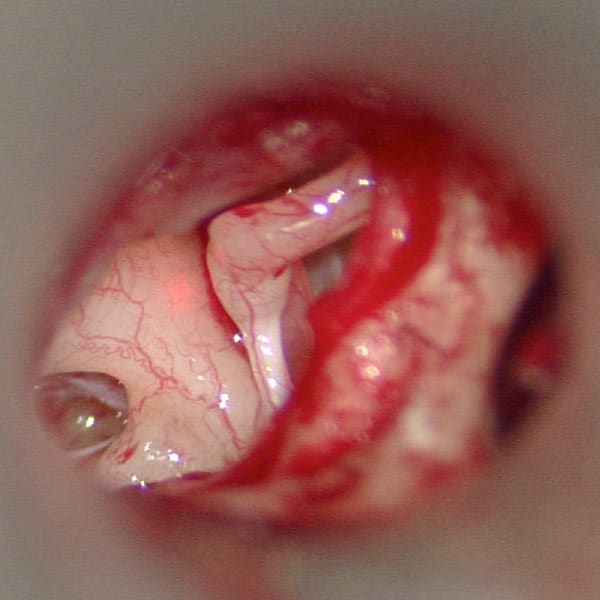Stapedial tendon myoclonus is a rare but treatable disease. Patients with stapedial tendon myoclonus experience a fluttering sound in their ear. This may occur in one or both ears. Patients usually describe the sensation as a butterfly flapping its wings or the sound of a very rapid heart beat. If the fluttering becomes very fast, the clicks can blend and sound like a machine-like humming sound. It is important to distinguish the clicking and crackling that can be experienced in the more typical Eustachian tube dysfunction from the fluttering that occurs in myoclonus.
What causes stapedial tendon myoclonus?
Stapedial tendon myoclonus may occur without a known cause. In some patients, it may begin after a stressful period. Certain electrolyte disturbances can cause myoclonus, as can some medications. Importantly, myoclonus can be an early sign of a larger, neurological disease. For these reasons it is important for your doctor and otologist to fully evaluate you and rule out more serious causes.
How is stapedial and tensor tympani myoclonus diagnosed?
The main tests include a hearing test and a tympanogram, which measures the movement of your ear drum. Visualization of the ear canal and ear drum with an otoscope or microscope is also important to see if any movement can be detected. Your otologist may also need a CT scan if preparing for of the myoclonus.

What are treatments of myoclonus?
Some forms of myoclonus can be treated by addressing the actual disease that may be causing it, such as stress, an electrolyte imbalance, or neurological issue.
If surgery is necessary, your otologist may offer you a procedure wherein the tendon of the muscle that is spasming is ligated. The surgery for myoclonus is minimally invasive, and has a very high success rate.


